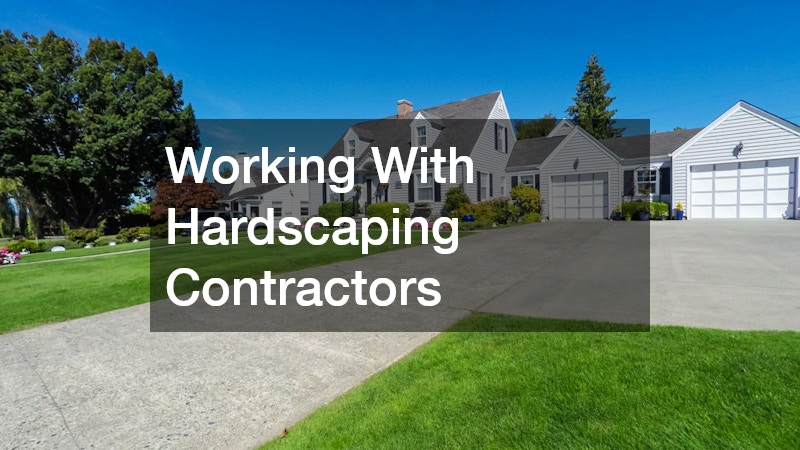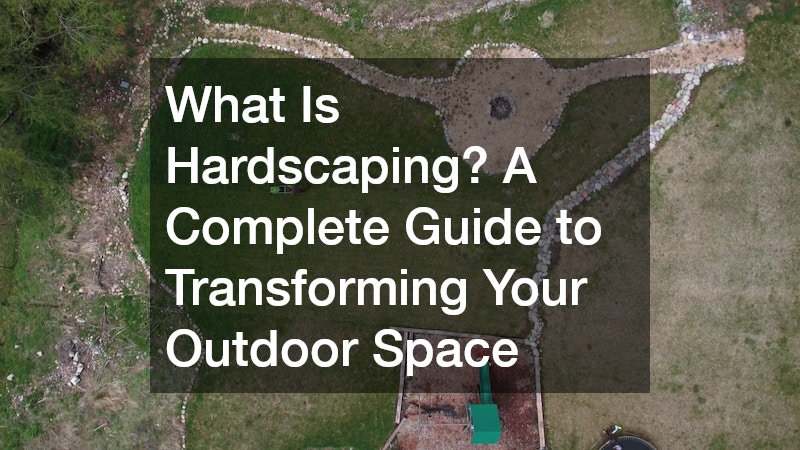When people think of landscaping, their minds often go straight to lawns, flowers, and trees. But there’s another essential element that plays a huge role in outdoor design—hardscaping. While landscaping refers to the soft, living elements of a yard, hardscaping deals with the “hard” non-living features that create structure, function, and visual interest in outdoor environments.
This article will break down what hardscaping is, the types of elements it includes, the benefits it brings to your property, and why working with hardscaping contractors can help bring your vision to life.
Understanding Hardscaping
Hardscaping refers to the man-made features used in landscape architecture that are constructed from hard materials like stone, concrete, wood, metal, and brick. These features are permanent and serve both practical and aesthetic purposes.
Think of patios, walkways, retaining walls, fire pits, fences, and even driveways—these are all hardscape elements.
Unlike plants, grass, and soil that change with the seasons, hardscape components offer lasting structure and require minimal maintenance once installed. Together, hardscape and landscape elements create a balanced and well-designed outdoor space.
Common Types of Hardscape Features
-
Patios and Decks
Patios are flat outdoor spaces usually made of concrete, stone, or pavers where people gather to relax, entertain, or dine. Decks, often made of wood or composite materials, serve a similar purpose and are typically elevated structures attached to a house. -
Walkways and Pathways
These features guide foot traffic and enhance curb appeal. Whether winding through a garden or leading to your front door, walkways made of flagstone, gravel, or brick can be both decorative and functional. -
Retaining Walls
Retaining walls are essential in properties with elevation changes. They help prevent soil erosion, manage water runoff, and add a strong visual element to landscaping. -
Driveways
More than just a place to park your car, a well-designed driveway enhances the overall look of your home. Paver, stamped concrete, and stone driveways add charm and durability. -
Outdoor Kitchens and Fire Features
Outdoor living is a growing trend, and features like built-in grills, pizza ovens, fire pits, and fireplaces extend your home’s living space. These elements are central to entertaining and enjoying your yard year-round. -
Fences and Pergolas
Fencing adds privacy and security while pergolas provide shade and architectural interest. Both serve functional roles while elevating the style of your yard.
Benefits of Hardscaping
1. Low Maintenance
One of the biggest advantages of hardscaping is that it typically requires less maintenance than soft landscaping. Once installed, patios, pathways, and walls need minimal upkeep.
2. Durability and Longevity
Hardscape elements are built to last. Whether it’s stone, concrete, or metal, these materials withstand harsh weather and daily wear and tear better than plants and grass.
3. Improved Functionality
Hardscaping adds usable space to your yard. A patio becomes an outdoor dining area, a retaining wall flattens a sloped yard, and a pathway improves access to different parts of the property.
4. Better Drainage and Erosion Control
Features like retaining walls and permeable pavers can help manage water flow, reducing erosion and minimizing puddles or flooding during heavy rain.
5. Enhanced Aesthetic Appeal
Hardscaping provides clean lines, symmetry, and balance that complement the natural elements of your yard. Together with landscaping, it completes the overall design of your outdoor space.
Hardscaping vs. Landscaping
While landscaping and hardscaping work together, they are distinctly different. Landscaping includes living things—flowers, shrubs, trees, and grass. Hardscaping includes the built environment—walkways, patios, and fences.
Think of hardscaping as the bones or foundation of your yard, and landscaping as the clothing and accessories that bring it to life. The most beautiful and functional outdoor spaces use a combination of both for maximum effect.
Working With Hardscaping Contractors
Designing and installing hardscape features takes planning, precision, and the right materials. This is where professional hardscaping contractors come in. These experts understand soil composition, drainage requirements, structural engineering, and aesthetic design.
Contractors can assess your space, listen to your goals, and create a custom plan that fits your needs. Whether you’re adding a new patio, building a retaining wall, or completely redesigning your backyard, a skilled contractor ensures quality and long-term performance.
Hardscaping is more than just a practical solution—it’s an opportunity to express your style and make your yard more enjoyable year-round. From increasing the usability of your outdoor space to improving its beauty and structure, hardscaping is a worthwhile investment in any home.
If you’re considering upgrading your outdoor space, now is the perfect time to explore the possibilities of hardscaping. Working with trusted hardscaping contractors can help turn your backyard into a functional, beautiful extension of your home.

